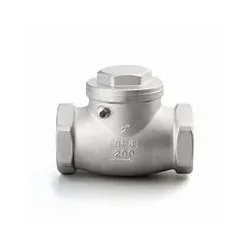What is a Check Valve and How Does it Work?
2025-05-19
Introduction
A check valve, also known as a non-return valve, is a simple yet essential component in fluid systems. It allows fluid (liquid or gas) to flow in one direction while preventing backflow, ensuring safe and efficient operation of pipelines and equipment.
How Does a Check Valve Work?

Check valves operate automatically—there’s no need for external actuation. They open when the fluid flows in the desired direction and close when the flow reverses. This automatic action prevents reverse flow, which can cause contamination, damage, or system failure.
Common Types of Check Valves
1. Swing Check Valve
Features a disc that swings open when flow begins.
Best for horizontal flow applications with low flow resistance.
2. Lift Check Valve
The disc lifts vertically when flow starts.
Often used in high-pressure applications with vertical flow.
3. Ball Check Valve
A ball inside the valve moves to block or allow flow.
Common in pumps and water systems.
4. Dual Plate (Wafer) Check Valve
Two spring-loaded plates that open with forward flow.
Compact design; widely used in industrial pipelines.
5. Diaphragm Check Valve
Uses a flexible diaphragm to control flow.
Ideal for low-pressure applications and chemical handling.
Applications of Check Valves
Check valves are used across a wide range of industries:
Water and wastewater treatment
Oil and gas
Chemical processing
HVAC systems
Pumping systems
Advantages of Check Valves
Prevent backflow and contamination
Operate automatically—no manual control needed
Protect pumps and compressors from damage
Available in a variety of sizes and materials
Conclusion
Check valves may seem small, but they play a critical role in keeping fluid systems safe and efficient. Whether you're designing a new system or maintaining an existing one, understanding how check valves work and where to use them is essential.


